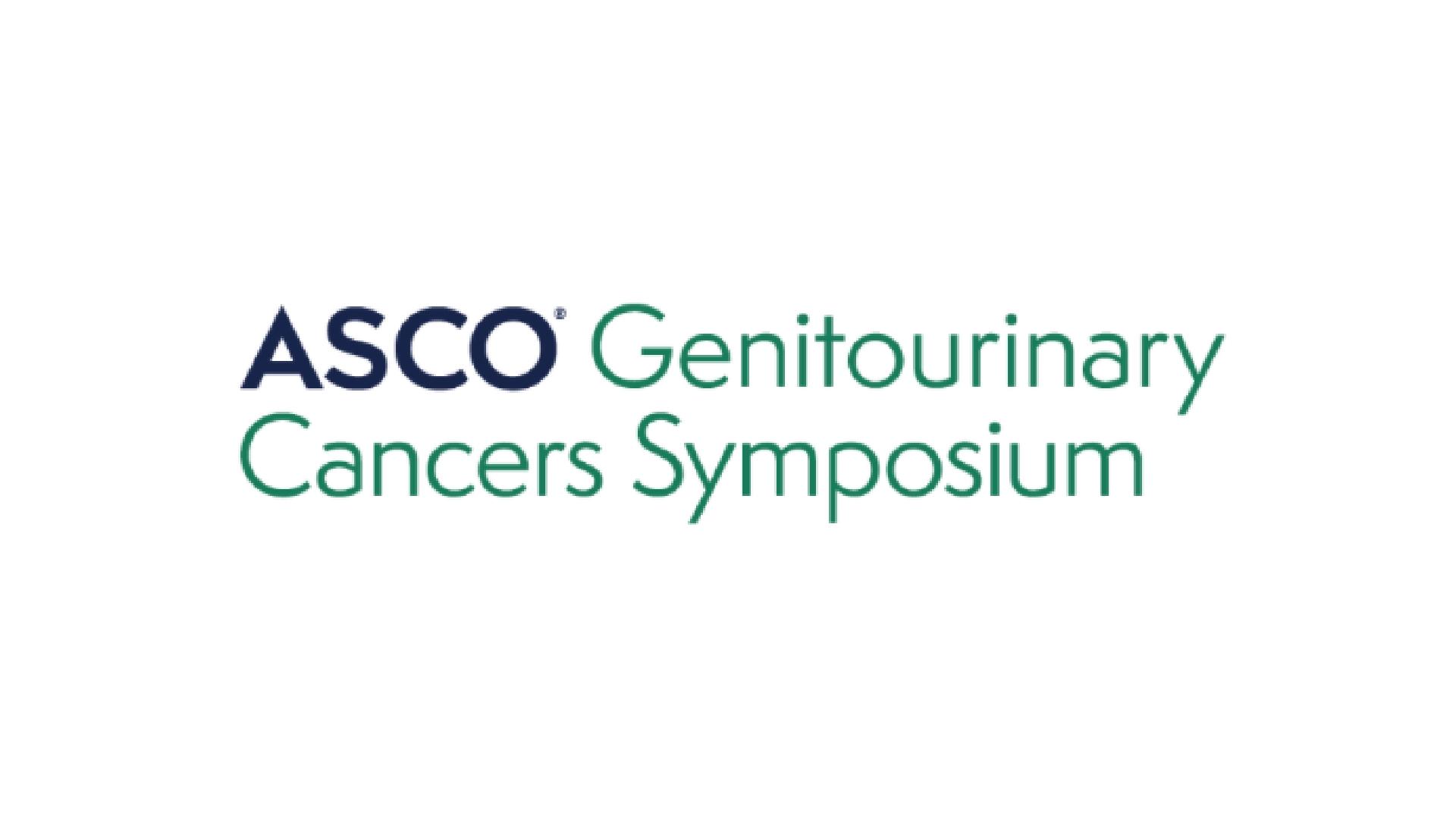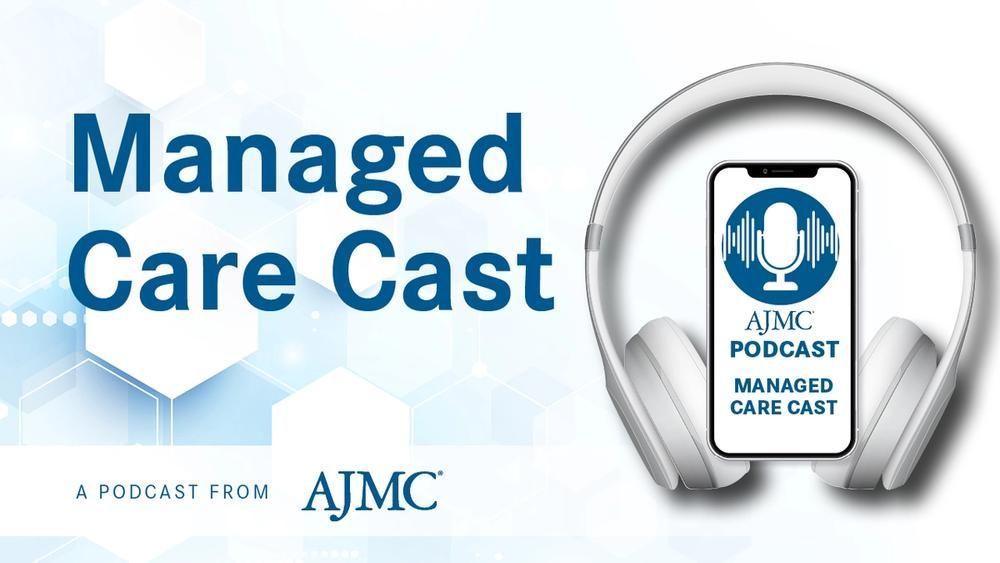News
Article
Changes in Tumor Size Track Advanced RCC Outcomes, Analyses From CLEAR Show
Author(s):
Two new measures tied to outcomes drawn from data in the CLEAR phase 3 trial will be presented during the ASCO Genitourinary Cancers Symposium later this week in San Francisco, California.
Changes in tumor size track outcomes for patients with advanced renal cell carcinoma (aRCC), according to new data from the landmark CLEAR study being presented this week at the 2025 American Society of Clinical Oncology Genitourinary Cancers Symposium (ASCO GU 2025).1
ASCO GU logo | Image credit: ASCO

Published in April 2021 in the New England Journal of Medicine,2 the CLEAR trial found that the combination of lenvatinib (Lenvima; Eisai) a VEGF inhibitor, plus pembrolizumab (Keytruda; Merck), a PD-1 inhibitor, was associated with significantly longer progression-free survival (PFS) for patients newly diagnosed with aRCC than sunitinib (Sutent; Pfizer), which had been the standard of care. This result led to the approval of the lenvatinib-pembrolizumab combination for aRCC in August 2021.3
The new analysis, the first of 2 findings based on data from the original trial (NCT02811861), shows that in the lenvatinib plus pembrolizumab arm, patients with a greater decrease in total size of their lesions at disease progression had longer median survival than patients with small decreases in tumor size. The abstract was made available ahead of ASCO GU 2025, which runs Thursday through Saturday in San Francisco, California. A similar connection was seen between tumor burden at progression and overall survival, according to the abstract.1
A second new result involved the score from the International Metastatic Renal Cell Carcinoma Database (IMDC) Consortium. The IMDC is a model used to classify patients with RCC based on their prognosis, using 6 risk factors. This data point, also involving only patients in the lenvatinib and pembrolizumab arm, showed that at 6 months, the IMDC score stayed the same or decreased from baseline in most patients, while 10% or less of the patients experienced an increase in the IMDC score, regardless of the score at baseline.1
To better understand these new data and the role of this combination for patients with aRCC, The American Journal of Managed Care® (AJMC®) spoke with Thomas Hutson, DO, PharmD, who is division chief, hematology/medical oncology; director, UMC Cancer Center; and professor of medicine, Texas Tech University Health Science Center School of Medicine. In 2007, Hutson helped usher in the last revolution in care for renal cell cancer when he was second author on the paper that compared sunitinib with interferon.4 That paper heralded a sea change, he said. “It was a cancer type that just didn't have effective therapy,” and for 14 years, sunitinib was the gold standard.
This interview was lightly edited for length and clarity.
AJMC: Can you give us some background on renal cell cancer, and what led to the CLEAR study?
Thomas Hutson, DO, PharmD | Image credit: Texas Tech

Hutson: The CLEAR study was a phase 3 trial, an international study evaluating the combination of an immunotherapy, pembrolizumab; combined with lenvatinib, which is one of our newer generation of oral therapies; it is unique in the setting in that the drug not only targets the VEGF pathway—the vascular endothelial growth factor pathway, which is the downstream effect of having the genetic mutation that results in the cancer—and that goes back to a mutation in the VHL gene; you can be born with and get hereditary syndrome that's rare, that produces kidney cancer in families or this mutation can be acquired, which is usually what happens. It gets acquired sometime through life. It's through, you know, whatever genetic insult happens….
You acquire this mutation in the von Hippel Lindau pathway (VHL), and we know that uniformly will produce clear cell renal cell cancer. And the clear cell renal cell cancer is the most common type of renal cell cancer. I use the term renal cell cancer and kidney cancer interchangeably, and that's because renal cell cancer is the most common cancer in the kidney, representing upwards of 90% or 95% of kidney tumors…. The study was called CLEAR because it was for clear cell because that's the primary tumor.
AJMC: Can you tell us about the targets involved in the CLEAR trial with lenvatinib?
Hutson: It not only targets the VEGF pathway, which we know we need to because of that mutation, but it also had unique properties in it could target FGF—fibroblast growth factor—and FGF is one of the escape mechanisms, if you will, when resistance happens to the VEGF inhibitor.
In theory and in the lab, one would think that lenvatinib would beat [sunitinib], because sunitinib, all it was, it was a VEGF inhibitor. Lenvatinib was a newer generation drug that has some advantages over sunitinib by itself, because it can potentially overcome resistance. And so that's what's unique about the lenvatinib drug. And so, what we're doing is we're taking that lenvatinib molecule, that drug, and we're combining it now with pembrolizumab, which, by itself, has activity against kidney cancer.
Why do you have to add them together? Is there some rationale to want to combine them? And the answer is, yes, there is. There's been a lot of basic science that has shown that lenvatinib by itself can actually change the environment that the tumor lives in and make it more responsive to the pembrolizumab.
So, there is a rationale, and that's why you see the pembrolizumab; it’s not the only combination of an immunotherapy and a pill. There are other ones out there, and that's because we've shown that that concept of the pill can improve the outcome with the immunotherapy. There’s a rationale that maybe combining the 2 would be synergistic. And so, we did this study with that hope; the original trial of lenvatinib and the CLEAR study—the original trial was positive.
[In 2023] at ASCO, I presented an oral presentation of the final overall survival analysis from that trial, which showed the hazard ratio of 0.79.5 So, there was an improvement in overall survival.
AJMC: What else have you found about the impact of this combination on overall survival?
Hutson: We found in the trial that the curves, if you will, towards the end kind of come together. That's because one of the things we face in looking at overall survival is the impact of other therapy. So, after patients progress…people will ultimately need additional therapy. And when you do an international study, there's not availability of all the therapies. So, if you have a country, for instance, that's putting a lot of patients on a trial, it can impact [the results] if it's not balanced. And so we were able to show, using some fancy statistical [calculations], that if you block that out, you actually see this really big impact on survival… .And then we also showed progression-free survival was another end point that we could look at; the hazard ratio for progression-free survival was 0.47; the combination drove progression-free survival to just about 24 months. And that’s the greatest thing we've ever seen in a combination.
…We now have now several trials, several drug combinations that are available for a doctor to prescribe as initial therapy. So, they get to choose among them. I just want to let you know, the [lenvatinib-pembrolizumab] one has the best of the data. The numbers are the best that have been reported for any of the combinations. It's just that they haven't been compared head to head. So, you have to take that with the grain of salt. And then we also showed that analysis, and this feeds into our current one: the greater the shrinkage of the tumor, the better the survival. This all kind of makes common sense, but you've got to prove this stuff.
So, in patients that have complete responses, which you can get in 17% or so of patients on the combination where the tumor goes in complete responses, we don't say that they're cured, because we know that the tumor can come back, but we get radiographically complete responses. We call that no evidence of disease, or you have near-complete responses where the tumor has gone down 90% in size, that those people live longer than someone who may have just had stable disease.
AJMC: Can you explain the importance of measuring tumor burden at progression?
Hutson: What we’ve shown is that more shrinkage [of the tumors], the greater the survival. You would think that if the tumor by measurement is shrinking, by measurement, this means you’re adding up all the tumor sites in the body…. We can add up the volume of all the cancer spots and make a number; we can add them all up as a volume of cancer in the body. As that is reduced, that also correlates to overall survival and progression-free survival, too.
What we’re providing as an update is that it's not only the shrinkage of the measurement of the tumor, but the total volume of cancer. As that goes down, that correlates with efficacy, the end points of survival, progression-free survival. So, the more volume that is reduced, the greater the outcome.
AJMC: Can you elaborate on the findings from the second measure in the abstract?
Hutson: We're showing that we can take away a point or 2 off your risk factor, and if you do that with therapy, you actually have an impact on survival, too. There is the ability to shift your score, if you will. If you started off as a person with poor risk, you may improve on your score after 6 months and become more like an intermediate person when we look at survival.… A lot of patients do remain constant, but there are patients that actually improve, and the people that improve the most are the poor risk group.… We see that from our original paper in the New England Journal of Medicine that the [combination] is most profoundly active in that that big 80% group, and it's that poor risk group that needs to have the best impact. And you can actually make a poor risk person into an intermediate risk person when it comes to the prediction of their survival with [lenvatinib-pembrolizumab], and we report that. It all really makes sense….You know, the more shrinkage you have, the greater the survival impact; the more reduction in tumor volume, the greater the survival impact; and you can improve your IMDC risk score.
And so, the conclusions are: (1) Patients who have lower disease burden after treatment with the combination from the CLEAR study have an improved prognosis, and (2) they do better long-term, irrespective of other treatments they receive. They're going to start off second-line therapy in a much better place.
AJMC: We speak to the payer community. Since the approval of this combination, has reimbursement improved?
Hutson: I think it's becoming more widely acceptable. What the field needs is head-to-head studies, because what you have are nuances between the therapies. So obviously, from a payer's perspective, if you have a group of therapies that are within a certain range of cost, a standard deviation, and I'm sure the prices of them are all relatively competitive, because that's generally what you usually do, that it's going to be important for those [pharmacy and therapeutic] committees and the payers to want to choose the more bang for the buck. And so that's a cost-effectiveness analysis; you could say that the efficacy data from this trial, the reported efficacy of this combination warrants cost-effectiveness analysis to be performed. This may become something that would be more cost-effective for a payer to pay for because you're getting the greatest efficacy from this type of combination.
I would say, of the reported combinations out there, the numbers with this are better. People will say, “Really, it's not fair. You need to do a head-to-head trial.” And there is some truth to that. But if you're a payer, in the setting where we're not going to have a head-to-head trial, then you're going to go with what's reported. And the reported data from [lenvatinib-pembrolizumab] is the best of all the regimens and, therefore, is likely to be the most cost-effective.
References
1. Grunwald V, Keizman D, Bedke J, et al. Analyses on impact of tumor burden at progression and changes in IMDC from baseline in patients (pts) with advanced renal cell carcinoma (aRCC) treated with lenvatinib + pembrolizumab (L+P) in the phase 3 CLEAR trial. J Clin Oncol. 2025;43(suppl 5). Abstract 531.
2. Motzer R, Alekseev B, Rha S-Y, et al. Lenvatinib plus pembrolizumab or everolimus for advanced renal cell carcinoma. N Engl J Med. 2021;384(14):1289-1300. doi:10.1056/NEJMoa2035716
3. FDA grants regular approval to pembrolizumab and lenvatinib for advanced endometrial carcinoma. News release. FDA. July 21, 2021. Accessed February 10, 2025. https://www.fda.gov/drugs/resources-information-approved-drugs/fda-grants-regular-approval-pembrolizumab-and-lenvatinib-advanced-endometrial-carcinoma
4. Motzer RJ, Hutson TE, Tomczak P, et al. Sunitinib versus interferon alfa in metastatic renal cell carcinoma. N Engl J Med. 2007;356(2):115-124. doi:10.1056/NEJMoa065044
5. Motzer RJ, Porta C, Eto M, et al. Final prespecified overall survival (OS) analysis of CLEAR: 4-year follow-up of lenvatinib plus pembrolizumab (L+P) vs sunitinib (S) in patients (pts) with advanced renal cell carcinoma (aRCC). J Clin Oncol. 2023;41(suppl 16). Abstract 4502. doi:10.1200/JCO.2023.41.16_suppl.4502




